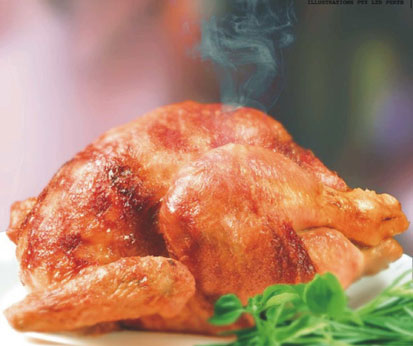Chicken spoilage now may be detected quickly using new device
 Officials at the U. S. government's measurement standards laboratory have said that a new instrument can quickly and precisely sniff minute amounts of poultry spoilage.
Officials at the U. S. government's measurement standards laboratory have said that a new instrument can quickly and precisely sniff minute amounts of poultry spoilage.
The U. S. Commerce Department agency has said that the new technique, developed by National Institute of Standards and Technology research chemists Tom Bruno and Tara Lovestead, can sniff out trace amounts of low-volatility compounds present early in the decay process.
The agency further said that analyzing such low-volatility compounds used to require long collection times to get a big enough sample for testing and identification.
But the new technique follows a method very much like what Mom's trusty nose uses -- it samples the "headspace," or the air above the spoiling chicken.
It was further explained that a short aluminum-coated tube cooled to a very low temperature gathers the low-volatility chemicals to its surface in a technique called cryoadsorption.
Six potential chemical markers that could be used to indicate poultry spoilage, before it becomes unhealthy, were separated and identified by Bruno and Lovestead.
Those markers were found in the air above spoiled chicken breasts, maintained in their original retail packaging and kept at room temperature for two weeks.
The agency also said that considering a typical American eats nearly 84 pounds of chicken a year, "this improved testing method for spoilage could have significant health implications." (With Inputs from Agencies)